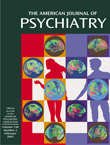Theodore Millon is a behavioral scientist in the best sense of the word. Many psychiatrists know him as the author of the Millon Clinical Multiaxial Inventory. This book distills a lifetime of research and clinical experience into a complex system of diagnosis-directed multimodal psychotherapy. Readers and thinkers who appreciate Millon’s systematic and comprehensive style will justly call it an instant classic. As a different sort of thinker, I can pay Millon a less facile compliment: this is one review copy that will stay on my shelf and to which I will frequently refer. It will help keep me honest.
Those who believe that “it is essential to understand persons through constructs” (Roger Davis, in the introduction), even when they resent the neo-Kraepelinian categories of DSM-IV as Millon does, end up inventing subtler and more nuanced versions (compare with Millon’s “compulsive personality, bedeviled type” or “paranoid personality, obdurate type”). Millon is aware of this irony. I am nevertheless reminded of Julio Cortazar’s classifying “scientist” in Cronopios y Famas:
He took the first group, consisting of eight pugnosed types, and noticed surprisingly that these boys divided actually into three subgroups, namely pugnoses of the mustached type, pugnoses of the pugilist type, and pugnoses of the ministry-appointee sort, composed respectively of 3, 3, and 2 pugnoses in each particularized category.
(1)
Within such a framework Millon presents a stunningly complete model of the “domain dysfunctions” of various personality styles (e.g., expressive, cognitive, intrapsychic, and temperamental domains) and aptly demonstrates how personality assessment can lead to “strategic goals and tactical modalities” for therapeutic intervention—case after case after case. All theoretical orientations from biological to psychodynamic are given their due, but, in practice, brief cognitive behavior strategies seem to get the lion’s share of the work.
Two fundamentals are neglected in this scheme. One is the enormous impact of culture on personality pathology. There is a short passage on individualism in the dominant American culture versus the group-oriented values of some ethnicities, but a whole chapter on narcissistic personalities makes no mention of consumer capitalism and how it reinforces narcissistic development.
The other neglected fundamental, which I will treat at more length, is the contribution of the therapist’s person to the therapy. This is clearly seen in the process of learning the trade.
To oversimplify for the sake of argument, we can consider two basic paths for learning psychotherapy: one moves from the “inside out,” the other from the “outside in.” The latter approach would consist, in part, of reading books like the one under review and then putting them into practice. (I tried and failed at this as a resident with Arnold Lazarus’s
Multimodal Behavior Therapy [2], an important ancestor of the present book.) The novice therapist of an operational and systematic turn of mind would presumably look up the relevant personality pattern in Millon’s book and then implement his recommendations, with requisite flexibility and individualized tailoring. Such a therapist would have to be comfortable in a quasi-omniscient, authoritarian role as a “normal” person performing procedural interventions on an “abnormal” one, a clarifier of “erroneous beliefs,” etc.
Over time and with supervision, this beginning therapist would gain an awareness of his or her own personal limitations and develop a sense of clinical intuition (and—dare I say it—a “therapeutic self”). To successfully endure in the field, he or she would have to. In this “outside-in” orientation, however, such a therapist would have no language in which to think about these things. Millon’s own statement is illustrative. To compensate for the “incomplete state of the science,” as he puts it, “clinicians draw an ill-defined ‘intuitive’ sense. Unfortunately, this intuitive process is an elusive and entirely subjective act that can neither be clearly articulated to others nor examined critically” (p. 126). I would add: not in this outside-in tradition. In my own peer supervision groups, we are constantly attempting to articulate and critically examine our intuition, but we learned therapy in a different way.
Our tradition does not describe therapy as a procedural interaction between a “normal” behavioral scientist and his or her charge, the inhabitant of a static diagnostic category. We emphasize instead the nature of therapy as a unique match-up of two changing individuals at a particular point in time, albeit focused unilaterally on the needs of the patient.
Learning therapy from the inside out works best when the novice therapist starts with one internally consistent approach consonant with his or her own personality, knowing in advance that any such approach (cognitive therapy, psychodynamic therapy, etc.) will be limited, but learning it thoroughly nonetheless. This contrasts with the application of an “eclectic” range of techniques, which in beginners’ hands becomes a superficial hodgepodge.
In this learning trajectory, the limits of the chosen initial approach will correspond to the novice therapist’s personal limitations, which are simultaneously addressed in his or her own personal psychotherapy to the end of distinguishing what can be transcended from what must be accepted. As therapists mature, they will be able to expand their technical range—but not indefinitely. Real therapists cannot be all things to all people.
As an example of the sort of book that supports this inside-out trajectory, Winnicott’s
Psycho-Analytic Explorations (3) served the purpose for me. I am not an analyst, and I neither agree with everything Winnicott said nor try to work as he did, but here was an honest individual voice with whose therapeutic struggles I could identify. (There is no sense of struggle in those of Millon’s cases that I read.) Winnicott gave me a human point of departure.
Personality-Guided Therapy is as good as the outside-in tradition gets, and that is very good. Systematic, operational thinkers could conceivably use it as a text for learning a comprehensive but basically cognitive behavior approach to therapy. Experienced therapists of a more literary/narrative/psychodynamic bent would do well to use it as a reference, to remind themselves of what their more subjectivist approach may be neglecting in any given case.

